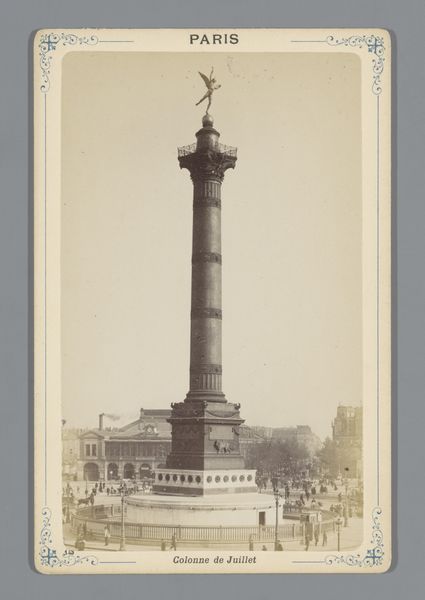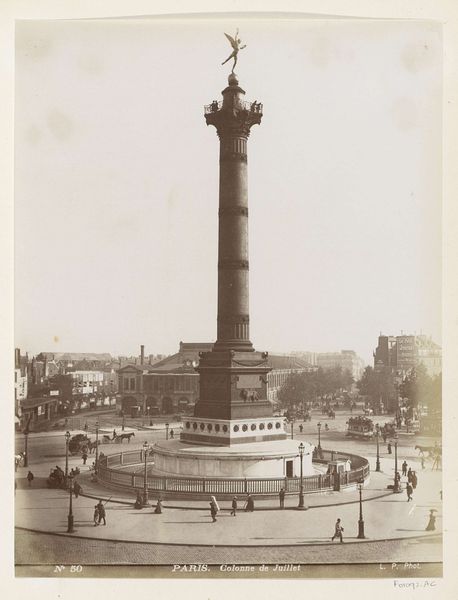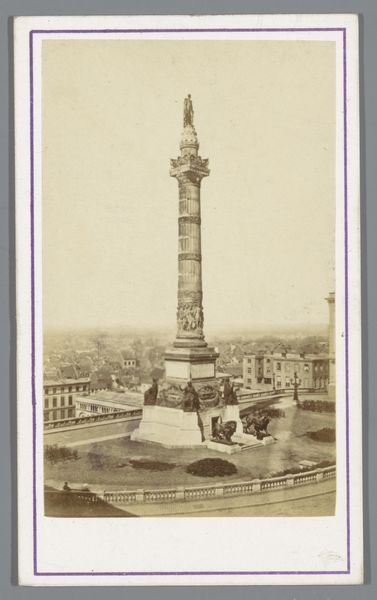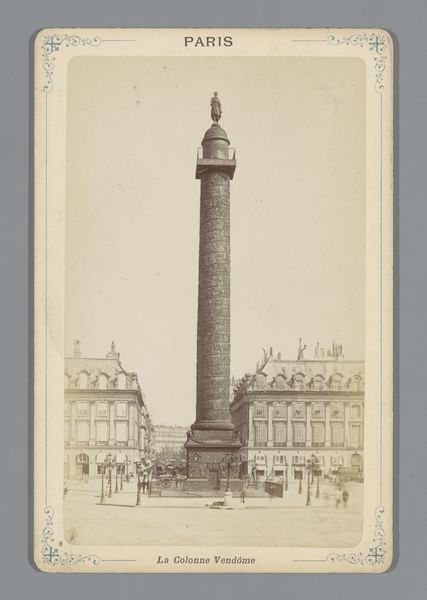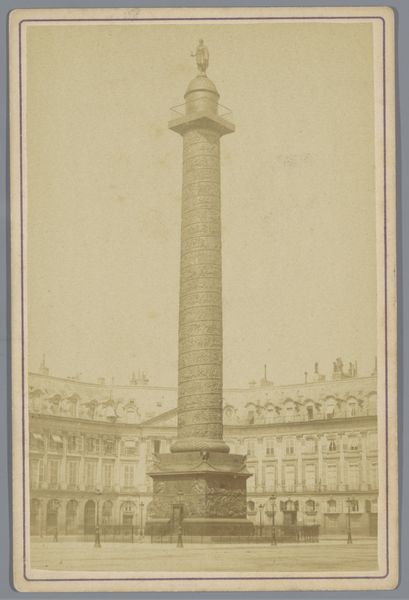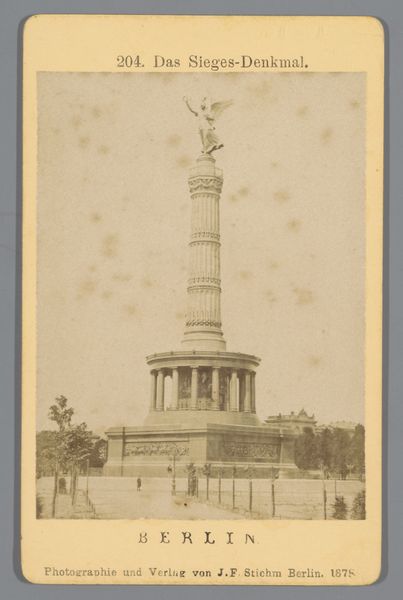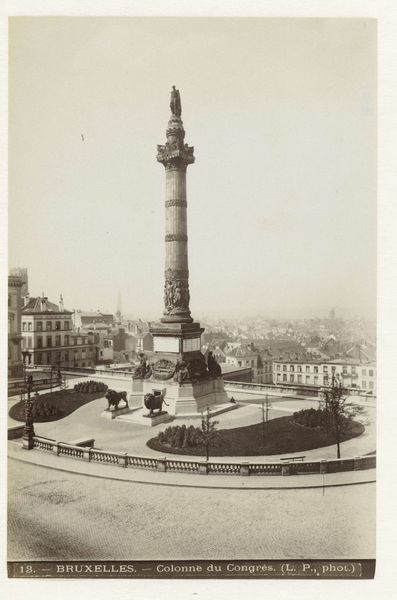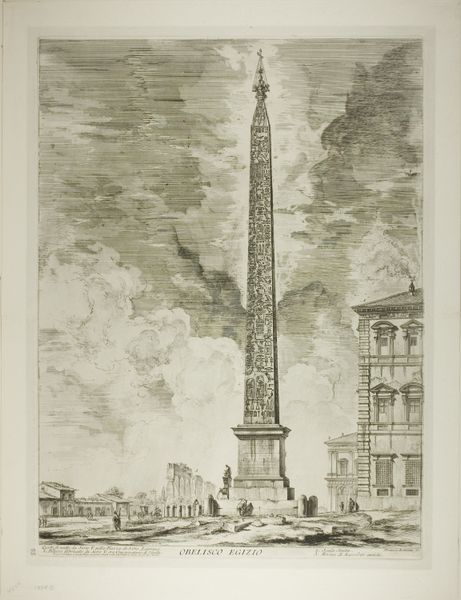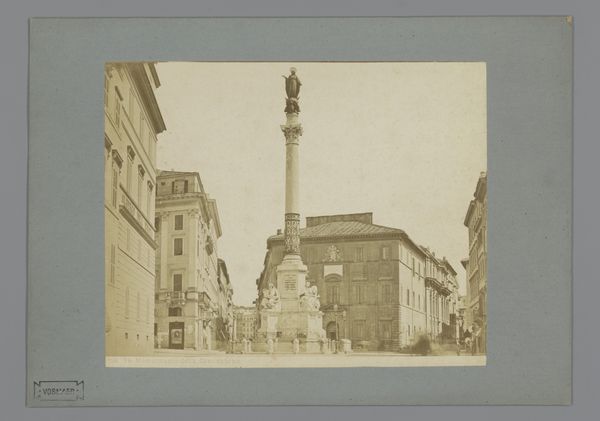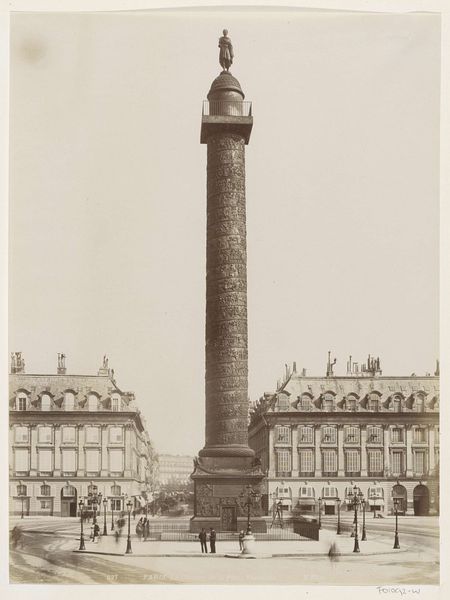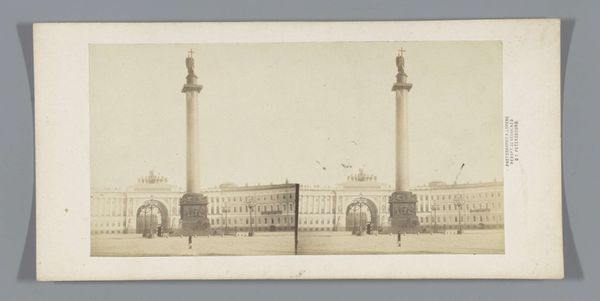
Colonne de Juillet op de Place de la Bastille te Parijs c. 1865 - 1875
0:00
0:00
photography, gelatin-silver-print
#
photography
#
gelatin-silver-print
#
19th century
#
cityscape
Dimensions: height 150 mm, width 100 mm
Copyright: Rijks Museum: Open Domain
Editor: Here we have a photograph entitled "Colonne de Juillet op de Place de la Bastille te Parijs" by the Compagnie Photographique Debitte & Hervé, created sometime between 1865 and 1875, using a gelatin-silver print. The sepia tone gives the scene a historical, almost nostalgic feel, despite its rigid composition. What significance does this column hold, in the broader context of Parisian history? Curator: It's a fascinating image, isn’t it? The Colonne de Juillet, or July Column, marks the site of the Bastille and commemorates the July Revolution of 1830. However, this photograph, created decades later, begs the question: how was the revolution remembered and re-presented to the public through images like these? Notice how the column dominates the scene, minimizing the presence of the surrounding buildings and people. It's almost an act of monumentalization through photography. Editor: That’s a good point. It’s a selective framing that elevates the monument. Does the medium itself - photography - play a role in shaping public memory of the revolution? Curator: Absolutely! Photography in the 19th century played a pivotal role in shaping how events and monuments were perceived and disseminated. Think about it: images could now be widely reproduced and circulated. This photograph not only documents the column but also actively contributes to its symbolic power. It encourages viewers to associate Paris with revolutionary ideals, conveniently sanitizing potential social unrest of the period and reinforcing a certain vision of national identity. Consider the political climate when this image was produced. Was the image of revolution being carefully managed? Editor: So, this photograph isn't just a snapshot of a monument; it's a carefully constructed statement about French identity and political history? Curator: Precisely. It’s a powerful reminder that art, even documentary photography, is never neutral; it’s always entangled with socio-political forces. Editor: That completely changes how I see this image. I had originally viewed it as just a historical record, but now, I understand it’s actively shaping a particular narrative. Thank you.
Comments
No comments
Be the first to comment and join the conversation on the ultimate creative platform.
